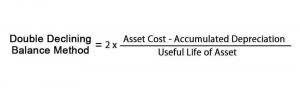
By accurately monitoring these costs, construction companies can make informed decisions, control project budgets, ensure profitability, and track progress efficiently. The construction-in-progress asset account captures all costs related to the project, including labor, materials, and equipment. This data helps assess project budget adherence and ensures accurate financial reporting for audits. Once construction is complete, the asset shifts to the appropriate fixed asset account. Welcome to our comprehensive guide on Construction Work In Progress (CWIP), where we unravel the complexities surrounding this crucial aspect of accounting in the construction industry.
- When overbilling or underbilling situations are allowed to persist unchecked, they can lead to skewed financial data, which in turn can affect decision-making processes.
- This is a method that attempts to match revenues to the expenses required to generate them.
- However, these costs should be offset by the revenue generated from the contract.
- The completed contract method does not rely on progress estimates and is easier to apply.
- We encourage potential clients to request a demo of our fractional CFO services.
- In the complex realm of construction accounting, the WIP report plays a pivotal role in project financial management, offering insights into project progress and financial health.
Financial Management: Overview and Role and Responsibilities

After the construction has been completed, the relevant building, plant, or equipment account is debited with the same amount as construction in progress. After the completion of construction, the company will record depreciation on the asset. Upon completion, the aggregated costs either capitalize into production assets like buildings or transfer to client asset accounts in case of construction management contracts.

Construction Collaboration: Navigating the Intersection of Project Management and Accounting

By following best practices such as effective cost tracking, consistent accounting methods, and proactive risk management, construction companies can navigate CWIP challenges with confidence. Accurate financial reporting, transparent disclosures, and adherence to accounting standards foster credibility and support well-informed decisions. Embracing these practices empowers construction professionals to efficiently manage CWIP, achieve successful project outcomes, and pave the way for sustained balance sheet growth in the dynamic construction industry. Once a construction project is finished, the costs in the CIP account move to a fixed asset account. This step helps with financial reporting, updating how these costs are perceived and managed.
Fostering Financial Transparency with CIP Accounts
The CIP procedures dictate the proper recording of construction costs in financial statements. In the company’s balance sheet, construction in progress is most commonly found under the head of PP & E( Plant, Property & Equipment). When it comes to CWIP, specific reporting practices ensure that financial statements present a comprehensive picture of the construction company’s operations. The IAS 11 regulation on construction contracts is an important step toward ensuring that companies are financially responsible for their projects. It dictates how revenues and expenses should be allocated among different stages of construction in progress account work, as well as which items arise from a particular contract type. Construction Contracts are crucial pieces in understanding company finances because it determines what income comes from them while also deciding when cost recoveries occur.
- By accurately monitoring these costs, construction companies can make informed decisions, control project budgets, ensure profitability, and track progress efficiently.
- Moreover, financial reporting for CWIP should comply with applicable accounting standards and regulatory requirements to ensure consistency and comparability across different construction companies.
- Engaging an experienced CIP accounting team ensures meticulous record-keeping and accurate financial reporting throughout the construction journey.
- Ultimately, including all potential sources of revenue will give you the best chance of accurately predicting the financial outcome of your construction project.
- It is crucial to understand the distinction between fixed assets and construction in progress for accurate accounting and financial reporting.
Tracking and Managing CIP Expenses
Revenues and gross profit are recognized each period based on the construction progress, in other words, the percentage of completion. Construction-in-progress are generally not classified as inventory as it would not be in-line with IAS2.9 (Inventories to be stated at lower of cost or NRV). Overall, the percentage of completion method is a useful tool for managing construction contracts and estimating revenue and costs.
